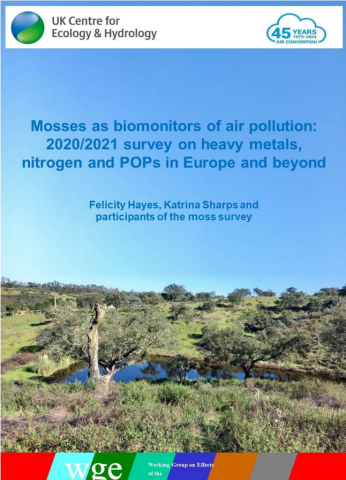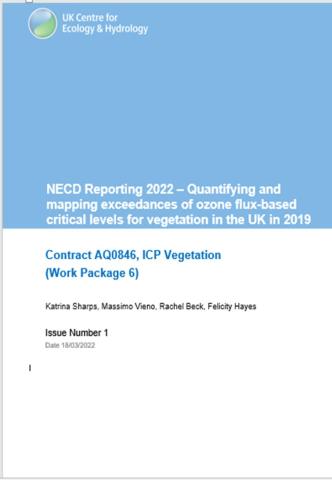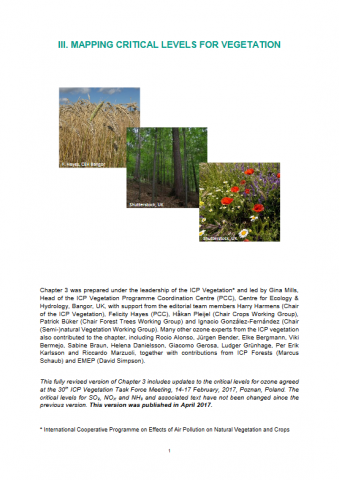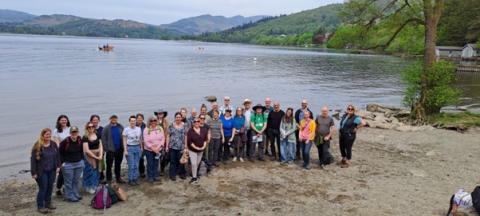
Mike Perring, UKCEH. 13th May 2024
Thanks to Carly Stevens and Imke Grefe from Lancaster University, and Don Monteith and Ellie Mackay from UKCEH Lancaster, and the chairing of Felicity Hayes, the annual CAPER (Community of Air Pollution Effects Researchers) conference was held at the Lancaster Management Centre, together with a field visit to Lake Windermere, 9th – 10th May 2024. As ever, the CAPER meeting brought together a range of parties from across the UK interested in air pollution impacts on land and water, from university researchers, statutory agencies and UK government departments, consultants and research agencies. All told, around 50 delegates were able to join the in-person event across the two days.
After a winter and spring characterised by (very) high rates of wet deposits, the sun shone for the two days of the conference. However, the contents of the conference were anything but dry. A full and varied program on 9th May covered topics such as future trends in tropospheric ozone and the impacts of ground level ozone on wheat, the use of stable isotopes to understand sources of nitrate and ammonium in mountain stream and lake networks, and the development of web tools, to aid consultants and statutory agencies in their assessments of impacts and sources of atmospheric pollution, particularly from nitrogen (N).
Managing the consequences of N pollution were considered in two talks both relating to highways. The first considered how to mitigate impacts of a new road development, planned to be in proximity to a Site of Special Scientific Interest and a Ramsar site. One option, potentially controversial, may be to reduce the agricultural use in the surrounding area to allow the in-combination pollution to remain below mandatory limits. The second contribution considered whether an “N timebomb” may be triggered by the opening of woodland canopy, were coppice management to be adopted by National Highways. If the N timebomb were to explode, N-loving species may outcompete the species that would otherwise be the biodiversity targets of the management. On the other hand, light-demanding species may be lost from woodland systems if canopies continue to close through lack of management and N pollution. Additional analyses are needed to help address this conservation conundrum.
Two talks provided an international flavour to the meeting, introducing delegates to an UKRI Global Challenges Research Fund project: the South Asian Nitrogen Hub. One talk highlighted ongoing work in Rilagala Forest Reserve in Sri Lanka, where a climate-controlled ammonia enhancement system is up-and-running, providing evidence as to the impacts of elevated ammonia on lichen and bryophyte communities. Ultimately, this research will inform the setting of appropriate critical levels and loads for these under-researched vegetation communities. Another talk, the final one of the day, provided a high-level overview of this ambitious project that seeks to address the rapidly increasing nitrogen pollution of the region. Indeed, the project covers the themes of agriculture, biodiversity, global flows and policy, across 32 research organisations with researchers from all eight South Asian countries.
Although the talks presented thus far focus on air pollution impacts and mitigation options, there have been policy successes in tackling air pollution issues at source, including for N. Thus, another set of talks considered whether and how species and ecosystems are recovering from previous high levels of air pollution. Indeed, the pathway(s) of recovery for species and ecosystems remain unclear. These talks considered desirable indicator properties to elucidate recovery, what may work as a recovery indicator from N deposition for butterflies and moths, and where, to the extent possible, unequivocal evidence for recovery can be found. These questions are gaining increasing traction as policy makers and others want to know whether and how, for instance, air pollution and biodiversity policies are working in real time. Given time lags and recovery delays inherent to ecosystems, and therefore some recovery indicators, knowing which indicators can provide evidence for recovery now will be increasingly important.
Knowing that pollution pressure is indeed declining is very important, and additional talks (and posters) communicated the value of local monitoring networks, especially where co-located with measures of ecosystem impact and recovery. Interestingly, at the broad scale, even though emissions of the N-containing compounds ammonia and nitrogen oxides are declining, atmospheric concentrations of ammonia can increase, as reactions that formerly removed ammonia and ammonium ions from the atmosphere no longer occur to the same extent. These complexities of atmospheric chemistry emphasize the need to quantify decreasing pollution pressures locally and capitalise on discontinued N addition experiments and/or closure of emission sources to uncover suitable recovery metrics and elucidate ecosystem recovery pathways.
Conversations continued into the late afternoon and evening, as delegates enjoyed the hospitality of Lancaster University’s Private South Dining Room, before exploring the Trough of Bowland – that is, the campus hostelry, rather than a night-time excursion to an Area of Outstanding Natural Beauty. Delegates did get chance for a (daytime) excursion though, with a coach trip to Brockhole-on-Windermere, a visitor centre within the Lake District National Park – although we were almost treated to a bonus stop at Brockholes, a nature reserve close to Preston.
At Windermere, delegates were intrigued by four talks, covering the long-term monitoring of pollution impacts on the lake itself, air pollution pressures on nearby upland tarns and associated water chemistry responses, and the recent use of citizen science approaches, whether to report algal blooms, or to help collect water quality data via the Big Windermere Survey. The talks were tied together by reflections from the National Park Authority on how they are addressing air pollution pressures and impacts, including through more sustainable transport options and working in collaboration with multiple partners. The value of bringing together people in the frame of CAPER was clear at this point, as connections were made between the Park Authority and delegates, especially in relation to efforts to attribute sources of air pollution. The value of public engagement was also obvious – four members of the public had been put off from wild swimming due to their concern in relation to the water quality. However, they were reassured to hear that, in this case, the cream deposits at the edge of the lake were most likely pollen. And not cyanobacterial scum – somewhat different to an algal bloom – but what is actually potentially toxic to animal/human health. The benefits of long-term monitoring were also crystal clear, as trends in nitrate and phosphate pollution over the last 80 years could be related to changes in agricultural practices and, for soluble reactive phosphorus in particular, changes to sewage management.
The meeting finished with more food for thought, as we enjoyed a picnic and conversation by the shores of Windermere prior to the coach trip back to Lancaster. A big thank you to all those who helped organise the conference. We look forward to reconvening next year – watch this space for information on where and when!
Want to find out more?
Follow these links for information on:
- The UK Air Pollution Assessment Service (formerly AERIUS): UK Air Pollution Assessment Service | JNCC - Adviser to Government on Nature Conservation
- The South Asian Nitrogen Hub: UKRI GCRF South Asian Nitrogen Hub | South Asian Nitrogen Hub (inms.international)
- The UK Nitrogen Balance Sheet: Nitrogen-balance-sheet.pdf (wwf.org.uk) [Reports underlying this sheet can be found here: Land of Plenty: bringing nature back to life | WWF]
- UKCEH – JNCC Report on Air Pollution Recovery Indicators: https://hub.jncc.gov.uk/assets/808167ed-c20b-4a13-beea-7487b3c34e3f
- Brockholes: Brockholes | The Wildlife Trust for Lancashire, Manchester and North Merseyside (lancswt.org.uk)
- Brockhole-on-Windermere: https://www.brockhole.co.uk/
- Bloomin’ Algae App: Bloomin’ Algae | UK Centre for Ecology & Hydrology (ceh.ac.uk)
- The Big Windermere Survey: The Big Windermere Survey — Freshwater Biological Association (fba.org.uk)
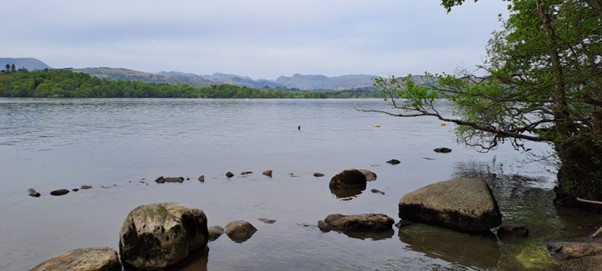
Lake Windermere – with pollen ‘scum’ towards the bottom right of the picture
